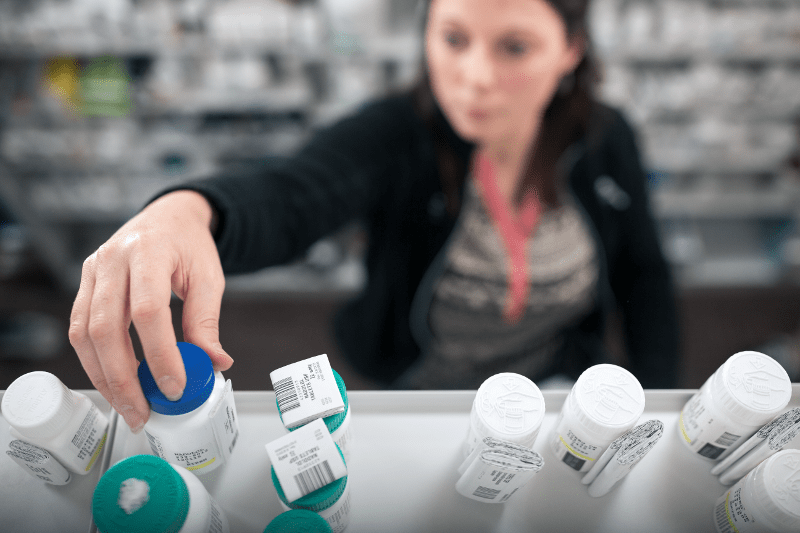The Evolution of Pharmacy: From Product Margins to Patient Outcomes

A Profession at an Inflection Point
Pharmacy stands at a pivotal juncture. For decades, pharmacists have served as the most accessible healthcare professionals, bridging the gap between prescribers and patients while safeguarding the safe and effective use of medications. Yet the business model that historically underwrote this work—primarily dispensing revenue—has been steadily eroded. Declining prescription margins, intensified competition, reimbursement pressures, and the commoditization of dispensing have converged to squeeze pharmacy economics. In parallel, medication therapies have grown more complex, adherence remains stubbornly inadequate, and the burden of chronic disease is worsening. These realities point in one clear direction: to stay relevant and thrive, pharmacy must innovate by leaning into what it has always done best—patient care.
This is not a revolution so much as an evolution. It is the rediscovery and re-centering of pharmacy’s clinical identity, built on expertise, our proximity to the patient, and a unique longitudinal view of medication use. As dispensing becomes more automated, centralized, or otherwise decoupled from the retail counter, the role of the community pharmacist must evolve from product to patient: the guardian of therapeutic outcomes, the navigator of medication complexity, and the trusted coach who helps people use their medicine safely, effectively, and affordably.
The Margin Squeeze: Why Status Quo Is Unsustainable
Pharmacies have long relied on a simple equation: buy medication inventory, dispense prescriptions, and capture a margin on the spread between acquisition cost and reimbursement. Several forces have eroded this model:
- Reimbursement pressure and PBM dynamics: Pharmacy benefit managers (PBMs) negotiate prices and rebates, often compressing pharmacy reimbursements and introducing unpredictable payment models. The result is thinner and more volatile margins at the store level.
- Rising costs: Inflating operational costs, rising drug costs, and the overall burden of inventory management makes the financial picture look worse. Even if margins could have been held flat, the business progression looks like an unwise investment. Even when volume is strong, profitability is not guaranteed.
- Convenience competition: Mail-order and central fill models leverage scale, automation, and logistics to reduce costs per fill. As more routine refills move to these channels, retail pharmacies face a volume-quality dilemma: try to maintain dispensing volume, or pivot capacity toward higher-value clinical interactions.
These headwinds are structural, not cyclical. The implication is clear: margin recovery is unlikely through volume alone. Profitability and sustainability will increasingly hinge on services that pay for expertise and outcomes—not product alone.
Retail Pharmacy’s Dual Realities: Inefficiency in Dispensing, Excellence in Care
It may feel uncomfortable to acknowledge, but retail pharmacy is not always the most efficient place to dispense prescriptions—particularly for routine maintenance medications with predictable refill cycles. Higher fixed costs, more labor-dependent workflows, and the constraints of a public-facing retail environment make automated central fill and mail-order compelling for many payers, and even patients.
Yet this is only half the story. Retail pharmacies are the best place for patients to receive care as they use their medications. That is because:
- Accessibility: Community pharmacies are everywhere. Patients see their pharmacist far more often than their primary care provider. This proximity enables real-time detection of side effects, adherence barriers, cost issues, and transitions of care risks.
- Medication literacy and behavior change: The pharmacist’s superpower is translating complex therapy into actionable steps for specific patients with specific circumstances. This includes device training (inhalers, injectables), titration support, med synchronization, and counseling tailored to health literacy and cultural context.
- Fragmentation buffer: Pharmacies often see the whole medication picture across multiple prescribers. That cross-visibility is invaluable for catching duplications, interactions, and therapeutic misalignment.
- Trust: Pharmacists occupy a position of trust in our communities. Patients bring their “real life” challenges to the counter—transportation, budget, caregiving burdens—that directly impact adherence and outcomes. We’ve been aware of social determinants of health, even before the term existed.
When dispensing is not accompanied with counseling and care, we risk losing precisely the value that makes medications work in the real world. The opportunity in front of us is to let dispensing happen where it is most efficient and convenient, while maintaining that community connection that supports patients best. Retail pharmacies should lean into being the care epicenter for medication use.
Clinical Care: Pharmacy’s Core, Revalued
Clinical pharmacy has always been the profession’s backbone—drug information mastery, therapy optimization, safety checks, and patient education. The difference now is that payers, providers, and policymakers are increasingly aligning incentives around outcomes rather than units dispensed. That alignment opens the door for pharmacists to be integral to value-based care.
Key pillars of a clinically oriented pharmacy model:
Medication therapy management (MTM): Structured reviews that assess indication, effectiveness, safety, and adherence, culminating in a plan that is shared with both patients and prescribers. We know these services reduce adverse events and hospitalizations when done consistently.
Dispensing when it makes sense, for the patient and for the pharmacy: Rather than focusing on script counts, a pharmacy needs to focus on dispensing the drugs that matter most for patient success; new to therapy, first fills, prior authorization management and other high touch services are best done through the community pharmacy connection.
Medication administrations: immunizations aren’t the only products that can be given by a pharmacist. New device trainings and first doses of urgently needed medications just to name a few. Manufacturers are looking for pharmacies willing to partner and ensure their products are successfully initiated in their patients.
Payment and Proof: From Tasks to Outcomes
To make clinical care economically durable, pharmacy must transition from task-based reimbursement to service-based and outcomes-driven payment. Three elements are vital:
- Technology that enables care to happen
- Evidence and data to prove the outcomes
- Payment models that reward the effort it took to accomplish that
Conclusion: The Moment to Lead
This is a necessary shift, not a terminal decline. For over 20 years now, every student has graduated as a PharmD, indicating the higher degree of clinical expertise in each pharmacy today. Community pharmacists have the training, trust, and touchpoints to improve outcomes at population scale. Retail pharmacy may not always be the most efficient node for the physical act of dispensing today; however, it is unmatched as the place where patients can be supported in using their medications well. By embracing clinical care as the central offering, pharmacists can elevate their role, strengthen their economic footing, and deliver what the healthcare system needs most right now: better medication outcomes for real people in real life.
This is our moment—not to reinvent who we are, but to evolve how we practice.
Learn more about a new era for pharmacy.





